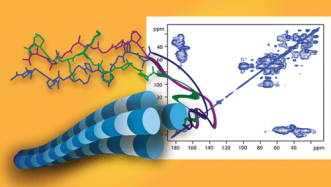Collagen Analysis
Collagen is a fundamental component of the extracellular matrix and the most abundant protein in animal bodies, accounting for about 30% of the total protein mass. It is a glycoprotein formed by three polypeptide α chains with Gly-XY repeat residues (Gly stands for glycine, X for proline, and Y for hydroxyproline), known for its triple helix structure. Over 28 types of collagen have been identified, with Type I collagen being the most abundant. It is commonly found in ligaments, tendons, skin, and bone tissue. Its mature, insoluble form gives it extraordinary strength, making it vital for the fluidity of living organisms. Collagen also has biochemical functions, affecting cell growth, proliferation, and differentiation.
Collagen can be broken down, transformed, and reabsorbed into the body, making it one of the best-selling supplements. It has a wide range of uses in medicine and cosmetics, such as:
1.Dermal fillers:Collagen injections can fill shallow depressions in the skin, such as fine lines and wrinkles.
2.Wound dressings:Collagen helps with wound healing by attracting new skin cells to the wound.
3.Periodontology:Collagen acts as a barrier to prevent rapidly growing gum tissue from developing into a tooth wound, giving the dental cells time needed for regeneration.
4.Vascular prostheses:Donor collagen tissue grafts have been used in reconstructing arteries, aiding peripheral nerve regeneration, and manufacturing vascular prostheses.
As a highly versatile material, collagen has been developed for wound care, burn care, orthopedic graft products, tissue engineering, hemostatic sponges, soft tissue enhancement injectables, as a drug delivery carrier, and as components in skin and hair care products. Depending on the source material and processing methods used for collagen, its chemical, physical, biological, immunological, or toxicological properties may change accordingly. Therefore, in the development or manufacturing of collagen-containing biomaterials, the most suitable testing methods are needed for collagen analysis to determine the properties of specific collagen materials and residues in the production process.

Goldberga, I. et al. Acc Chem Res. 2018.
Collagen characterization
BTP (Biotech) offers high-quality collagen analysis services based on multiple platforms, including physical and biochemical analysis as well as impurity analysis. The company’s laboratories follow regulations and guidelines from NMPA, ICH, FDA, and EMA, and are certified by CNAS/ISO9001 dual quality systems, establishing a complete quality system with data hot/cold/offsite backup, regular equipment calibration/interim verification, and software audit tracking, providing you with integrated collagen analysis services, including:
1)Collagen characterization
Collagen molecular weight
Collagen content/purity (hydroxyproline determination)
Terminal amino acid sequence
Mass peptide map
Peptide coverage
Advanced structure
Amino acid heterogeneity analysis
Total protein content
Moisture content
2)Biochemical characterization of collagen
Solubility
Isoelectric point
Osmolality
SDS-PAGE analysis
Total DNA (ppm or %)
Total lipid content
Trypsin resistance
Collagenase resistance
GAGs abundance
Elastin determination
pH
3)Physical characterization of collagen
Viscosity (mainly for soluble samples)
TEM or SEM-electron micrographs
Mechanical testing (e.g., tensile strength)
Optical microscopy
Surface characterization
4)Collagen impurity identification
Heavy metals and trace element analysis
Additives (cross-linkers, lubricants, drugs, preservatives)
Processing residues (antibiotics, detergents, etc.)
Host cell contaminants (HCP, HCD)
Peptidoglycan
Residual antibiotics
Bacterial endotoxins
For more services, please contact us for a free consultation!
Collagen analysisOne-stop service
You only need to place an order and send the samples
BTP one-stop service completes: sample processing - machine analysis - data analysis - project report
Related services
Hyaluronic acid quality control testing services
High-resolution mass spectrometry molecular weight
N/C-terminal sequence analysis
Peptide coverage/peptide map analysis
Amino acid composition analysis
Product-related impurity analysis
Process-related impurity analysis
Other process-related impurity analysis
How to order?





